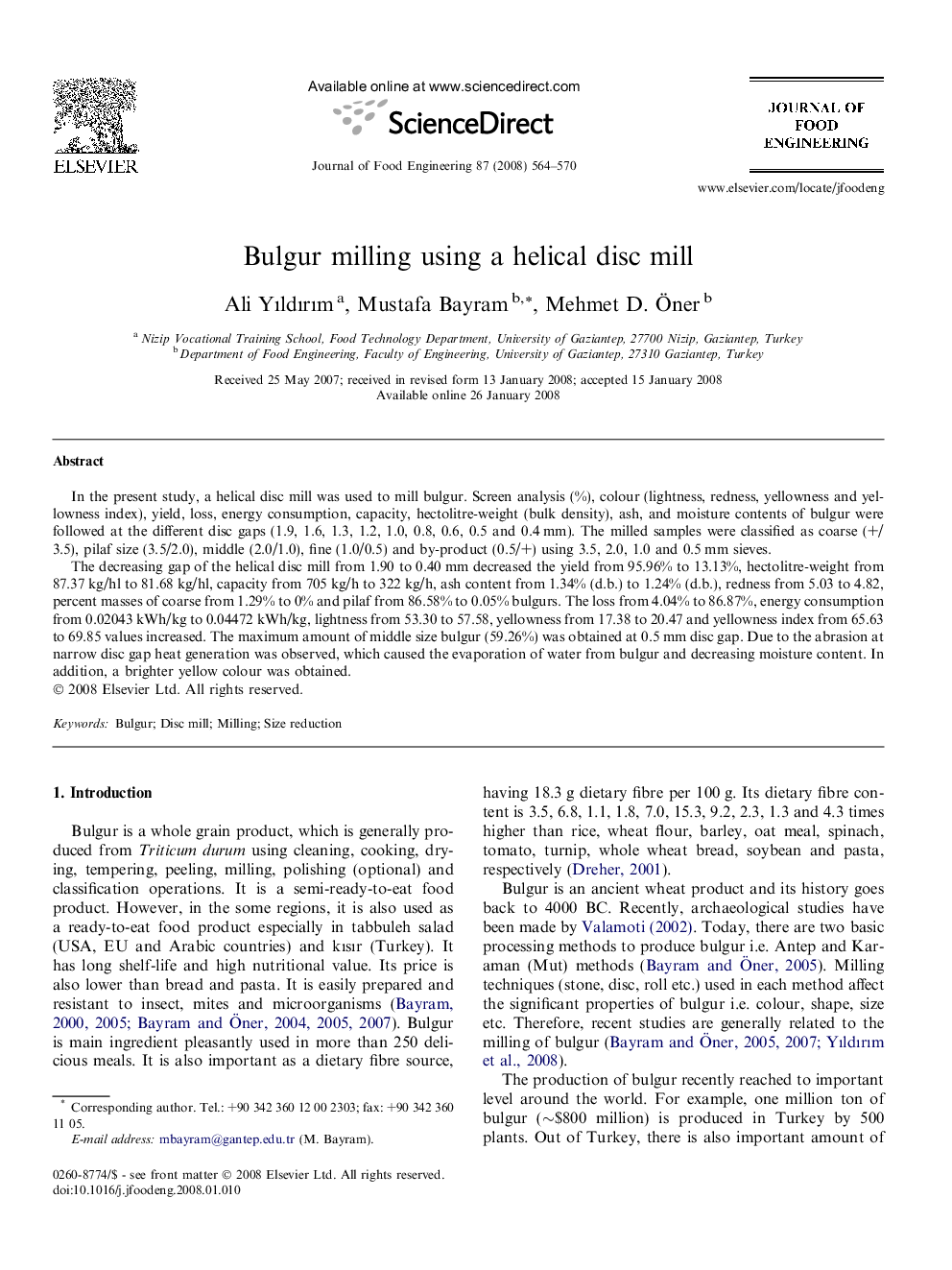| Article ID | Journal | Published Year | Pages | File Type |
|---|---|---|---|---|
| 225263 | Journal of Food Engineering | 2008 | 7 Pages |
In the present study, a helical disc mill was used to mill bulgur. Screen analysis (%), colour (lightness, redness, yellowness and yellowness index), yield, loss, energy consumption, capacity, hectolitre-weight (bulk density), ash, and moisture contents of bulgur were followed at the different disc gaps (1.9, 1.6, 1.3, 1.2, 1.0, 0.8, 0.6, 0.5 and 0.4 mm). The milled samples were classified as coarse (+/3.5), pilaf size (3.5/2.0), middle (2.0/1.0), fine (1.0/0.5) and by-product (0.5/+) using 3.5, 2.0, 1.0 and 0.5 mm sieves.The decreasing gap of the helical disc mill from 1.90 to 0.40 mm decreased the yield from 95.96% to 13.13%, hectolitre-weight from 87.37 kg/hl to 81.68 kg/hl, capacity from 705 kg/h to 322 kg/h, ash content from 1.34% (d.b.) to 1.24% (d.b.), redness from 5.03 to 4.82, percent masses of coarse from 1.29% to 0% and pilaf from 86.58% to 0.05% bulgurs. The loss from 4.04% to 86.87%, energy consumption from 0.02043 kWh/kg to 0.04472 kWh/kg, lightness from 53.30 to 57.58, yellowness from 17.38 to 20.47 and yellowness index from 65.63 to 69.85 values increased. The maximum amount of middle size bulgur (59.26%) was obtained at 0.5 mm disc gap. Due to the abrasion at narrow disc gap heat generation was observed, which caused the evaporation of water from bulgur and decreasing moisture content. In addition, a brighter yellow colour was obtained.
